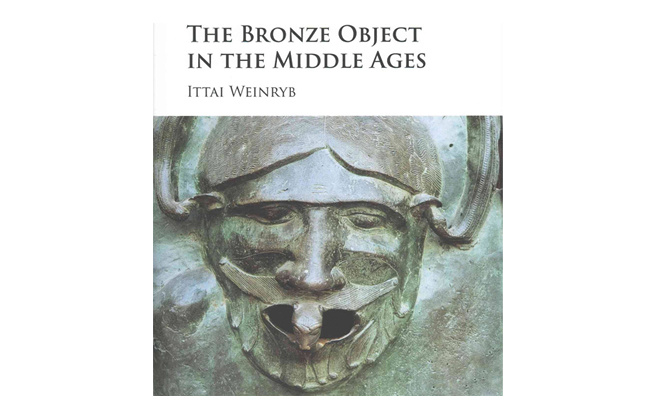
Associate Professor Ittai Weinryb’s The Bronze Object in the Middle Ages: Sculpture, Material, Making has won the 2017 book prize of the International Center of Medieval Art.
Published in 2016 by Cambridge University Press, this study argues that bronze sculpture has a unique place within the history and historiography of medieval art and material culture. That unique place is derived from the distinctive, almost enchanting, qualities of the technical complexity of lost-wax casting and from material qualities distinct to the medium. Together, these give monumental cast bronze its particular place and impact in shaping the historical progress of medieval art.
The book is divided into four parts, each of which addresses one aspect of the place of bronze sculpture in medieval Germany and Italy. Chapter 1 deals with the act of Making. Chapter 2, Signification, considers how the bronze sculpture gained significance after the moment of production, separated from the mundane and ushered into the realm of the distant and marvelous. Chapter 3, Acting, focuses on the relationship of bronze sculpture to a series of responses that ascribed the production of the sculpture with supernatural qualities. Chapter 4, Being, deals with forms of reception of bronze sculpture as something that is, as something whose existence is an integral part of its function, as something appreciated, almost passively, as an object that “is there.” The four chapters form together a cultural as well as an intellectual history of bronze casting in medieval Europe. They follow a non- diachronic division of knowledge, an approach also found in the organization of the Warburg Library, London, into Image, Word, Orientation and Action; with the entire structure of the library presenting an organization of knowledge that is different from traditional trajectories, light is shed, by means of classification, on traditionally lesser visible cultural nodes. The four chapters present a historical trajectory that starts in the early ninth century in Germany and ends in south and central Italy somewhere around the mid- thirteenth century.
From the Jurors’ Decision:
“… Weinryb’s monograph makes the case that the medieval bronze object is a coherent subject of study, identifying bronze as the material used for the most prestigious works of art in the medieval period. He brings to bear evidence for a multiplicity of objects through chapters on making, signifying, acting and being. This is a remarkably original approach to the notions and uses of bronze in the early and central Middle Ages. Addressing both the making and the reception of monumental works in bronze, he argues that new notions were developed to imagine ideas about public works of art – including the fascinating concept of sound as inherent in bronze –together with the relationship between artisanal techniques and divine actions. Weinryb interrogates how the newly introduced ancient philosophy, superstition and cosmology also affected ideas related to bronze works. Probing the interconnection between notions of divine and human creativity, his analysis invigorates the current art historical discussion concerning materiality and public monuments, particularly the public as the site of reception of works of art by a large audience. The book’s strength, however, is less in original discoveries than in the complex interpretation it provides, e.g. of the problem of the pagan history of the material or the relationship among alloys, alchemy, and idolatry. Weinryb invites the reader to consider such apparently unrelated aspects as technological developments, worship, pagan associations, Biblical hints at the use of bronze, belief in the magical agency of images, etc., as mutually interacting in giving shape to the experience and perception of bronze objects in the Middle Ages. All this makes Weinryb’s book especially groundbreaking, and useful not only for specialists but also as a good pedagogical tool for students, given that it is written in an easily accessible style. The Bronze Object in the Middle Ages: Sculpture, Material, Making is truly thought-provoking in the best sense of the term.”
